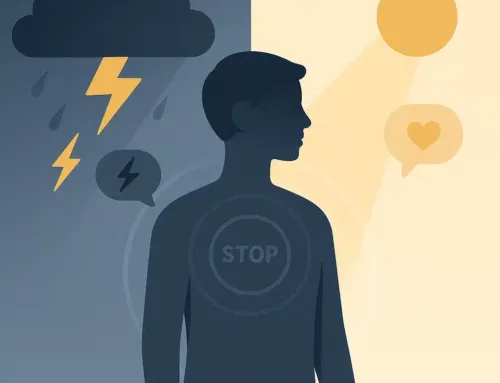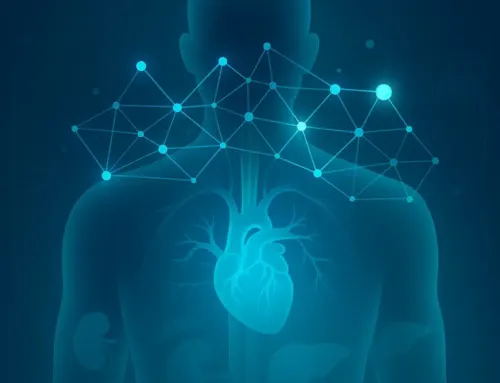
Approx. read time: 10.3 min.
Post: Exploring the Complex Connection Between Cat Ownership and Schizophrenia Risk
Mysterious Link Between Cats and Schizophrenia: New Insights
The Perils of Cat Ownership
Recent studies suggest owning a cat might double the risk of developing schizophrenia-related disorders. Over the last four decades, researchers from the Queensland Centre for Mental Health Research in Australia analyzed 17 studies from 11 countries, including the US and the UK. They found a significant association between cat ownership and increased odds of these disorders.
The Role of Toxoplasma Gondii
The link between cats and schizophrenia isn’t new, traced back to a 1995 hypothesis that suggested exposure to the parasite Toxoplasma gondii (T. gondii) as a potential cause. This parasite, usually harmless, can be transmitted through undercooked meat, contaminated water, or directly from cats. In the US alone, about 40 million people may be infected by T. gondii, often without symptoms.
Once it enters the human body, T. gondii targets the central nervous system and can affect neurotransmitters. This interaction has been linked to personality changes, the emergence of psychotic symptoms, and other neurological disorders.
Inconsistent Findings and the Need for Robust Research
While some studies show a connection between childhood cat ownership and later schizophrenia, others do not. Similarly, while some link cat exposure to higher scores on schizophrenia-related traits, others find no such association. These mixed results highlight the need for more thorough and high-quality research to clarify these relationships.
Studies Highlight the Importance of Timing
Interestingly, one study found no significant association between owning a cat before age 13 and later developing schizophrenia. However, it did find a link when focusing on ownership between the ages of 9 and 12, suggesting that the timing of exposure may be critical.
Another study noted higher schizotypy scores among individuals who had been bitten by a cat, compared to those who had not. This points to possible other factors, such as different pathogens like Pasteurella multocida, being involved.
Conclusion: A Call for Better Research
The research team advocates for more extensive studies to better understand how cat ownership might influence the risk of developing mental health disorders. Despite the intriguing findings, it’s clear that more definitive research is needed before drawing any solid conclusions about the mysterious link between cats and schizophrenia.
Table of contents:
- What is toxoplasmosis?
- How do people get toxoplasmosis?
- What are the signs and symptoms of toxoplasmosis?
- Who is at risk for developing severe toxoplasmosis?
- What should I do if I think I am at risk for severe toxoplasmosis?
- What should I do if I think I may have toxoplasmosis?
- What is the treatment for toxoplasmosis?
- How can I prevent toxoplasmosis?
- If I am at risk, can I keep my cat?
- Once infected with Toxoplasma is my cat always able to spread the infection to me?
What is toxoplasmosis?
Toxoplasmosis is an infection caused by a single-celled parasite called Toxoplasma gondii. While the parasite is found throughout the world, more than 40 million people in the United States may be infected with the Toxoplasma parasite. The Toxoplasma parasite can persist for long periods of time in the bodies of humans (and other animals), possibly even for a lifetime. Of those who are infected however, very few have symptoms because a healthy person’s immune system usually keeps the parasite from causing illness. However, pregnant women and individuals who have compromised immune systems should be cautious; for them, a Toxoplasma infection could cause serious health problems.
How do people get toxoplasmosis?
A Toxoplasma infection occurs by one of the following:
- Eating undercooked, contaminated meat (especially pork, lamb, and venison) or shellfish (for example, oysters, clams or mussels).
- Accidental ingestion of undercooked, contaminated meat or shellfish after handling them and not washing hands thoroughly (Toxoplasma cannot be absorbed through intact skin).
- Eating food that was contaminated by knives, utensils, cutting boards and other foods that have had contact with raw, contaminated meat or shellfish.
- Drinking water contaminated with Toxoplasma gondii.
- Accidentally swallowing the parasite through contact with cat feces that contain Toxoplasma. This might happen by
- Cleaning a cat’s litter box when the cat has shed Toxoplasma in its feces;
- Touching or ingesting anything that has come into contact with cat feces that contain Toxoplasma; or
- Accidentally ingesting contaminated soil (e.g., not washing hands after gardening or eating unwashed fruits or vegetables from a garden).
- Mother-to-child (congenital) transmission.
- Receiving an infected organ transplant or infected blood via transfusion, though this is rare.
What are the signs and symptoms of toxoplasmosis?
Symptoms of the infection vary.
- Most people who become infected with Toxoplasma gondii are not aware of it because they have no symptoms at all.
- Some people who have toxoplasmosis may feel as if they have the “flu” with swollen lymph glands or muscle aches and pains that may last for a month or more.
- Severe toxoplasmosis, causing damage to the brain, eyes, or other organs, can develop from an acute Toxoplasma infection or one that had occurred earlier in life and is now reactivated. Severe toxoplasmosis is more likely in individuals who have weak immune systems, though occasionally, even persons with healthy immune systems may experience eye damage from toxoplasmosis.
- Signs and symptoms of ocular toxoplasmosis can include reduced vision, blurred vision, pain (often with bright light), redness of the eye, and sometimes tearing. Ophthalmologists sometimes prescribe medicine to treat active disease. Whether or not medication is recommended depends on the size of the eye lesion, the location, and the characteristics of the lesion (acute active, versus chronic not progressing). An ophthalmologist will provide the best care for ocular toxoplasmosis.
- Most infants who are infected while still in the womb have no symptoms at birth, but they may develop symptoms later in life. A small percentage of infected newborns have serious eye or brain damage at birth.
Who is at risk for developing severe toxoplasmosis?
People who are most likely to develop severe toxoplasmosis include:
- Infants born to mothers who are newly infected with Toxoplasma gondii during or just before pregnancy.
- Persons with severely weakened immune systems, such as individuals with AIDS, those taking certain types of chemotherapy, and those who have recently received an organ transplant.
What should I do if I think I am at risk for severe toxoplasmosis?
If you are planning to become pregnant, your health care provider may test you for Toxoplasma gondii. If the test is positive it means you have already been infected sometime in your life. There usually is little need to worry about passing the infection to your baby. If the test is negative, take necessary precautions to avoid infection (See below).
If you are already pregnant, you and your health care provider should discuss your risk for toxoplasmosis. Your health care provider may order a blood sample for testing.
If you have a weakened immune system, ask your doctor about having your blood tested for Toxoplasma. If your test is positive, your doctor can tell you if and when you need to take medicine to prevent the infection from reactivating. If your test is negative, it means you need to take precautions to avoid infection. (See below).
What should I do if I think I may have toxoplasmosis?
If you suspect that you may have toxoplasmosis, talk to your health care provider. Your provider may order one or more varieties of blood tests specific for toxoplasmosis. The results from the different tests can help your provider determine if you have a Toxoplasma gondii infection and whether it is a recent (acute) infection.
What is the treatment for toxoplasmosis?
Once a diagnosis of toxoplasmosis is confirmed, you and your health care provider can discuss whether treatment is necessary. In an otherwise healthy person who is not pregnant, treatment usually is not needed. If symptoms occur, they typically go away within a few weeks to months. For pregnant women or persons who have weakened immune systems, medications are available to treat toxoplasmosis.
How can I prevent toxoplasmosis?
There are several steps you can take to reduce your chances of becoming infected with Toxoplasma gondii.
- Cook food to an internal temperature high enough to kill harmful pathogens like Toxoplasma. The only way to tell if food is safely cooked is to use a food thermometer. You can’t tell if food is safely cooked by checking its color and texture (except for seafood).
- Use a food thermometer to ensure foods are cooked to a safe internal temperature. Learn how to place the thermometer correctly in different food to get an accurate reading.
- Whole cuts of beef, veal, lamb, and pork, including fresh ham: 145°F (then allow the meat to rest for 3 minutes before carving or eating)
- Fish with fins: 145°F or cook until the flesh is opaque and separates easily with a fork
- Ground meats, such as beef and pork: 160°F
- All poultry, including ground chicken and turkey: 165°F
- Leftovers and casseroles: 165°F
- Check this chart for a detailed list of temperatures and foods
- Freeze meat* for several days at sub-zero (0° F) temperatures before cooking to greatly reduce chance of infection. *Freezing does not reliably kill other parasites that may be found in meat (like certain species of Trichinella) or harmful bacteria. Cooking meat to USDA recommended internal temperatures is the safest method to destroy all parasites and other pathogens.
- Rinse fresh fruits and vegetables under running water.
- Wash your utensils, cutting boards, and countertops with hot, soapy water after preparing each food item.
- Do not eat raw or undercooked oysters, mussels, or clams (these may be contaminated with Toxoplasma that has washed into seawater).
- Do not drink unpasteurized goat’s milk.
- Wear gloves when gardening and during any contact with soil or sand because it might be contaminated with cat feces that contain Toxoplasma. Wash hands with soap and water after gardening or contact with soil or sand.
- Ensure that the cat litter box is changed daily. The Toxoplasma parasite does not become infectious until 1 to 5 days after it is shed in a cat’s feces.
- Wash hands with soap and water after cleaning out a cat’s litter box.
- Teach children the importance of washing hands to prevent infection.
If you have a weakened immune system, please see guidelines for Immunocompromised Persons.
For more information on safe food handling to help reduce foodborne illness visit the Food Safety website.
If I am at risk, can I keep my cat?
Yes, you may keep your cat if you are a person at risk for a severe infection (e.g., you have a weakened immune system or are pregnant); however, there are several safety precautions you should take to avoid being exposed to Toxoplasma gondii, including the following:
- Ensure the cat litter box is changed daily. The Toxoplasma parasite does not become infectious until 1 to 5 days after it is shed in a cat’s feces.
- If you are pregnant or immunocompromised:
- Avoid changing cat litter if possible. If no one else can perform the task, wear disposable gloves and wash your hands with soap and water afterwards.
- Keep cats indoors. This is because cats become infected with Toxoplasma through hunting and eating rodents, birds, or other small animals that are infected with the parasite.
- Do not adopt or handle stray cats, especially kittens. Do not get a new cat while you are pregnant or immunocompromised.
- Feed cats only canned or dried commercial food or well-cooked table food, not raw or undercooked meats.
- Keep your outdoor sandboxes covered.
Your veterinarian can answer any other questions you may have regarding your cat and risk for toxoplasmosis.
More on: Handwashing
Once infected with Toxoplasma is my cat always able to spread the infection to me?
No, cats only spread Toxoplasma in their feces for 1-3 weeks following infection with the parasite. Like humans, cats rarely have symptoms when infected, so most people do not know if their cat has been infected. Your veterinarian can answer any other questions you may have regarding your cat and risk for toxoplasmosis.
For more information on toxoplasmosis in cats: https://www.capcvet.org/guidelines/toxoplasma-gondii/External
Cat ownership increases risk of schizophrenia
Related Videos:
Related Posts:
How do I write a business plan?









